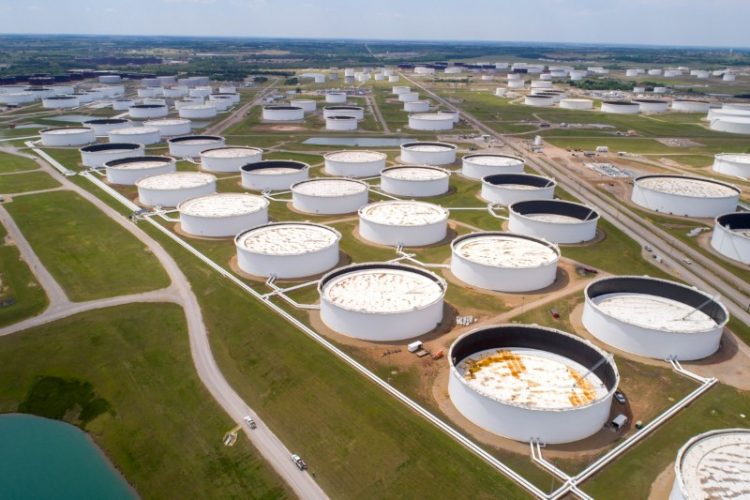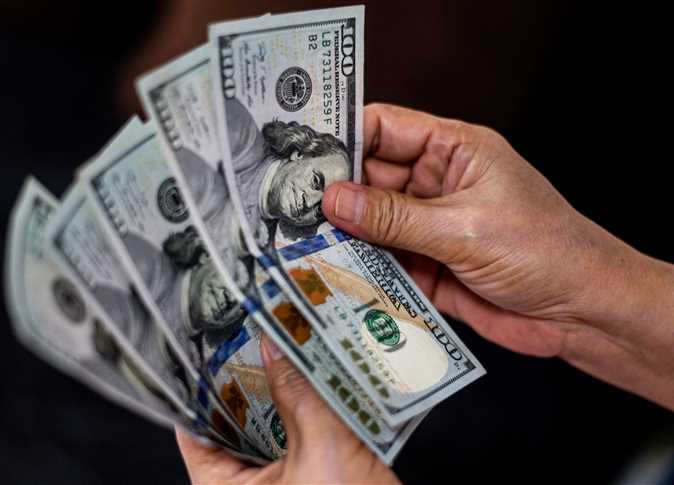Publisher: Maaal International Media Company
License: 465734
As global stockpiles, remain at their lowest levels, amid tight supplies, in 10-Year -Kamco Invest reported
Oil Prices Keep the upward Trend to Catch with $100 a barrel Mark -Market Overview
اقرأ المزيد
As oil prices exceeded the level of $90, a barrel, for the 1st time, in more than 7 years, and as market conditions continued to tighten with high demand, amid tightly controlled supplies, Kamco Invest reported, however, a host of market analysts expect the price levels to keep moving up towards hitting $100 mark, a barrel.
The firm report stated that there diverse factors that contributed to the consolidation of these gains, including the increasing geopolitical risks, at the global stage, winter storms in the United States, the continued rise in demand for oil as an alternative to natural gas, and the announcement by some producers of a series of production interruptions.
Sudden drop in US oil stocks, during the week ending on February 4, 2022, increased positive sentiment, and this trend was observed in many other major economies, as global oil stocks fell to low levels not seen, in about a decade.
However, the resumption of talks between Iran and the United States to revive the nuclear accord, and the possibility of increasing supplies from OPEC members contributed to consolidate the gains last week.
In terms of oil prices, gains widened supported by expectations of increased demand for all commodities, as the Bloomberg Commodity Index rose to near its highest level since December 2014, against the backdrop of higher prices of key commodities, including iron ores and aluminum.
Reports showed that the Chinese authorities had to intervene to control prices by implementing stricter regulations on disclosure, and according to the International Energy Agency, oil stocks in the OECD countries fell to their lowest levels in 7 years, during November 2021.
Notably, Europe, along with Japan and South Korea, which came in the lead, in terms of the most depleted stocks at the level of the OCED.
Inventory levels also declined, according to data from the US Energy Information Administration, during the past two weeks, after achieving gains in mid-January 2022.
On the other hand, and in the light of the seasonal slowdown, refineries are trying to cope with increased demand.
.
OPEC marginally raised its estimates of oil demand growth for 2021 by 17,000 barrels per day to 5.7 million barrels per day, and it is estimated that oil demand has reached 96.65 million barrels per day in 2021, after reviewing demand data, in the 3rd and 4th quarter of 2021.
There were no changes in the oil demand growth forecast for 2022 as it remained stable at the level of 4.2 million barrels per day, mainly due to the easing of pandemic-related restrictions, in most parts of the world.
The latest data on traffic revealed that the seat capacity of global airlines increased for the first time this year, during the past week, thanks to the return of domestic capacity, in China.
However, despite the optimistic sentiment, the current seat capacity is still 25% lower compared to the levels in the same period, in 2019, due to the decline in international travel by 50% and domestic travel by 11%.
At the same time, demand for jet fuel in Europe is expected to recover slowly during this quarter and gain momentum during the 2nd quarter of 2022, to gradually return to the 5-year average for the remainder of the year.
Global production of petroleum liquids increased in January 2022.
Preliminary data indicated monthly growth of 0.71 million barrels per day, reaching an average of 98.69 million barrels per day.
The increase was mainly driven by the increase in production outside OPEC, with an increase of 0.65 million barrels per day, to reach an average of 70.71 million barrels per day.
Estimates of the growth of non-OPEC oil liquids supplies for the Year 2021 were reduced by 0.06 million barrels per day to 0.6 million barrels per day, and the average supply is expected to reach 63.6 million barrels per day.
The change reflects downward revisions to supply data for Brazil, China, Canada (due to production outages), Ecuador and the United Kingdom, due to unexpectedly lower production during the 4th quarter of 2021.
These declines were offset by an upward revision to US supply data, which came against the backdrop of recovery in production, in the Gulf of Mexico and steady monthly growth, in shale oil production.
The oil supply growth forecast for 2022 did not witness any changes, with an expected growth rate of 3.02 million barrels per day, to reach an average of 66.6 million barrels per day.
However, on a country-by-country level, production forecasts were revised and raised for the UK and Ecuador, which was offset by lower forecasts for the US and Brazil.
However, recent statements indicate an increase in oil production investments, in the United States.
More recently, Exxon Mobil and Chevron announced plans to increase production from the Permian Basin by 25% and 10%, respectively, this year.
The US Energy Information Administration also raised its forecast for 2023 to a record production rate of 12.60 million barrels per day, compared to its previous forecast of 12.41 million barrels per day, and to 11.97 million barrels per day for this year, compared to 11.80 million barrels per day.
OPEC production rose for the 9th consecutive month, in January 2022, albeit at marginal levels, driven mainly by lower output swings from major African producers.
Production averaged 28.0 million barrels per day during the month, according to OPEC 2ndary sources, an increase of 64,000 barrels per day.
A similar growth of 50 thousand barrels per day, to reach an average of 28.14 million barrels per day, which is the highest rate it has reached in the last decade, Bloomberg Agency data revealed.
Production averaged 28.0 million barrels per day during the month, according to OPEC 2ndary sources, an increase of 64,000 barrels per day.
Bloomberg Agency data revealed a similar growth of 50 thousand barrels per day to reach an average of 28.14 million barrels per day, which is the highest rate it has reached in 28-month.
This increase was mainly driven by the recovery in production in Nigeria, in addition to marginal increases, in the production of Saudi Arabia, Kuwait, UAE and Iran.
This increase was partially offset by a sharp drop in Libya’s production, in particular.
In light of the increase in production that was recorded this month, the spare production capacity of OPEC producers declined to 5.2 million barrels per day, with Saudi Arabia continuing to maintain its lead, in terms of having the largest excess production capacity (spare capacity) of 1.44 million barrels per day, followed by Iran and the UAE, with their spare production capacity reaching 1.31 million barrels per day and 1.29 million barrels per day, respectively.
In its last monthly meeting, OPEC and its allies maintained a cautious mood towards the steady growth in oil prices, and maintained their policy of gradually restoring production with an increase of 400,000 barrels per day, in March 2022, in line with previous increases tempo.
However, data issued by Rystad Energy and Standard & Poor’s Global Platts indicated that the group’s production is less than the target level by 0.7 million barrels per day, as the production quotas of 14 out of 18 members of the group are lower than their target levels.
As a result, the overall compliance rate reached 120.8% in January 2022, the highest level recorded since the implementation of production cut policies, in 2020.








